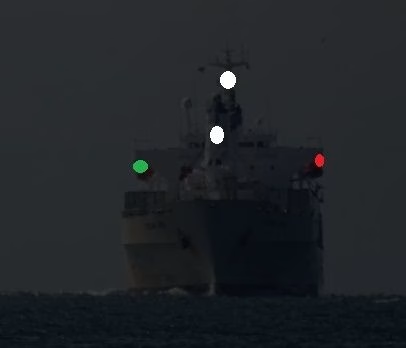FPSO (Floating Production, Storage, and Offloading) vessels are pivotal in offshore oil and gas operations, often stationed in dynamic marine environments where clear communication and safety are paramount.
One critical aspect of maritime safety is compliance with the International Regulations for Preventing Collisions at Sea (COLREGS). These regulations define the proper use of navigation, signaling lights to prevent accidents and ensure smooth operations at sea.
What Are COLREGS Lights?
COLREGS lights are specific configurations of navigation and signaling lights mandated by the International Maritime Organization (IMO) to indicate a vessel’s position, status, and intent to nearby ships. For FPSO vessels, these lights are crucial, given their stationary or restricted mobility status when engaged in operations.


Key COLREGS Light Configurations for FPSOs
FPSO vessels must display lights that communicate their operational state. Below are some typical light arrangements:
At Anchor or Stationary Operations
White all-round light: Visible at all times to signal the vessel is anchored.
Red all-round light: Displayed alongside the white light if the FPSO is engaged in hazardous operations, such as offloading crude oil.
Restricted in Ability to Maneuver (RAM)
Red, White, Red all-round lights (vertical): This configuration indicates restricted maneuverability due to operational tasks like drilling or offloading.
Side and Stern Lights: Green and red sidelights and a white stern light may be required if the vessel’s restrictions require some navigation.
Working with Support Vessels
Additional task-specific lights: Yellow flashing or fixed lights to coordinate with support or shuttle tankers during crude oil transfer.

Why COLREGS Compliance Is Critical for FPSOs
Collision Prevention
COLREGS lights communicate the vessel’s status, enabling nearby vessels to maneuver safely. For FPSOs, this is crucial in busy offshore zones.
Operational Safety
Proper light signaling ensures that other vessels maintain a safe distance, reducing risks during sensitive operations such as crude transfer or subsea intervention.
Legal Compliance
Adhering to COLREGS is mandatory for all vessels under IMO guidelines. Non-compliance can lead to hefty fines, operational delays, and reputational damage.
Challenges in Implementing COLREGS on FPSOs
Power Requirements: Navigation lights need reliable power sources to ensure 24/7 functionality, even in adverse weather conditions.
Environmental Factors: Harsh offshore environments can damage lights, necessitating durable and corrosion-resistant solutions.
Complex Operations: Coordinating light configurations during simultaneous operations, such as crude oil transfer and personnel movement, can be challenging.

Understand the role of flashing beacons
Get the right team
Vivo Asia Engineering & Trading has a proven track record in delivering tailored solutions for offshore and maritime industries. Navigating the complexities of COLREGS compliance and integrating advanced navigation and signaling systems for FPSO vessels can be challenging.
Get in touch with Vivo Asia today and let the right team help you achieve seamless system integrations for your FPSO operations.










